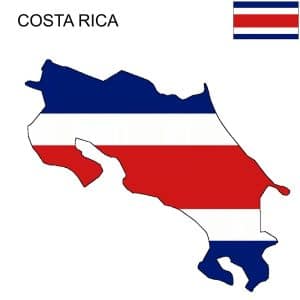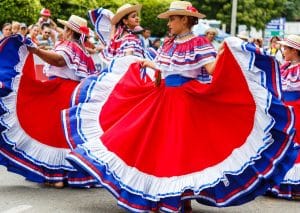Headlines
Costa Rica: A Brief Overview of Its History from Pre-Columbian Times to the Present

Costa Rica is a country in Central America with a rich and diverse history. It was inhabited by various indigenous groups before the arrival of the Spanish in the 16th century, who colonized it as part of the Captaincy General of Guatemala. Costa Rica became part of the Federal Republic of Central America in 1821, after gaining independence from Spain, but later seceded and declared itself a sovereign republic in 1848. Costa Rica has experienced several periods of political and social turmoil, but also has established a stable and democratic government since 1949, when it abolished its army and adopted a new constitution. Costa Rica is known for its environmental conservation, cultural diversity, and economic development.
Pre-Columbian era: Costa Rica was inhabited by various indigenous groups, such as the Chorotega, the Huetar, the Cabecar, and the Bribri, who had different cultures and languages. They were influenced by the Mesoamerican and Andean civilizations, but also developed their own traditions and technologies. They traded with other regions and had complex social and political structures.
See Population, Official Language And More…

Costa Rica

Costa Rica
Colonial era: Costa Rica was colonized by the Spanish in the 16th century, who exploited the native population and resources. Costa Rica was part of the Captaincy General of Guatemala, which was ruled by the Viceroyalty of New Spain. Costa Rica was a poor and isolated province, with little economic development or political influence. The colonial society was divided into classes based on race and wealth, with the peninsulares (born in Spain) at the top and the mestizos (mixed-race) and mulattos (African descent) at the bottom.
Independence: Costa Rica became independent from Spain in 1821, along with the rest of Central America. It joined the Federal Republic of Central America, a union of five states that aimed to create a unified nation. However, the federation soon dissolved due to internal conflicts and external threats. Costa Rica declared itself a sovereign republic in 1848, under the leadership of Jose Maria Castro Madriz, who became its first president.
Civil war: Costa Rica experienced several civil wars in its history, mainly due to political and social disputes. The most significant one was the civil war of 1948, which erupted after a disputed presidential election between Rafael Angel Calderon Guardia and Otilio Ulate Blanco. The war lasted for 44 days and resulted in more than 2,000 deaths. The war ended with the victory of Jose Figueres Ferrer, who led a rebel army called the National Liberation Army. Figueres abolished the army and established a provisional government that drafted a new constitution.
Modern era: Costa Rica has been a stable and democratic country since 1949, when it adopted its current constitution. It has had peaceful transitions of power and free elections. It has also developed its economy, based on agriculture, tourism, and technology. It has invested in education, health care, and social welfare. It has also been a leader in environmental conservation, protecting its biodiversity and natural resources. It has maintained a neutral and pacifist foreign policy, avoiding conflicts and promoting human rights.





